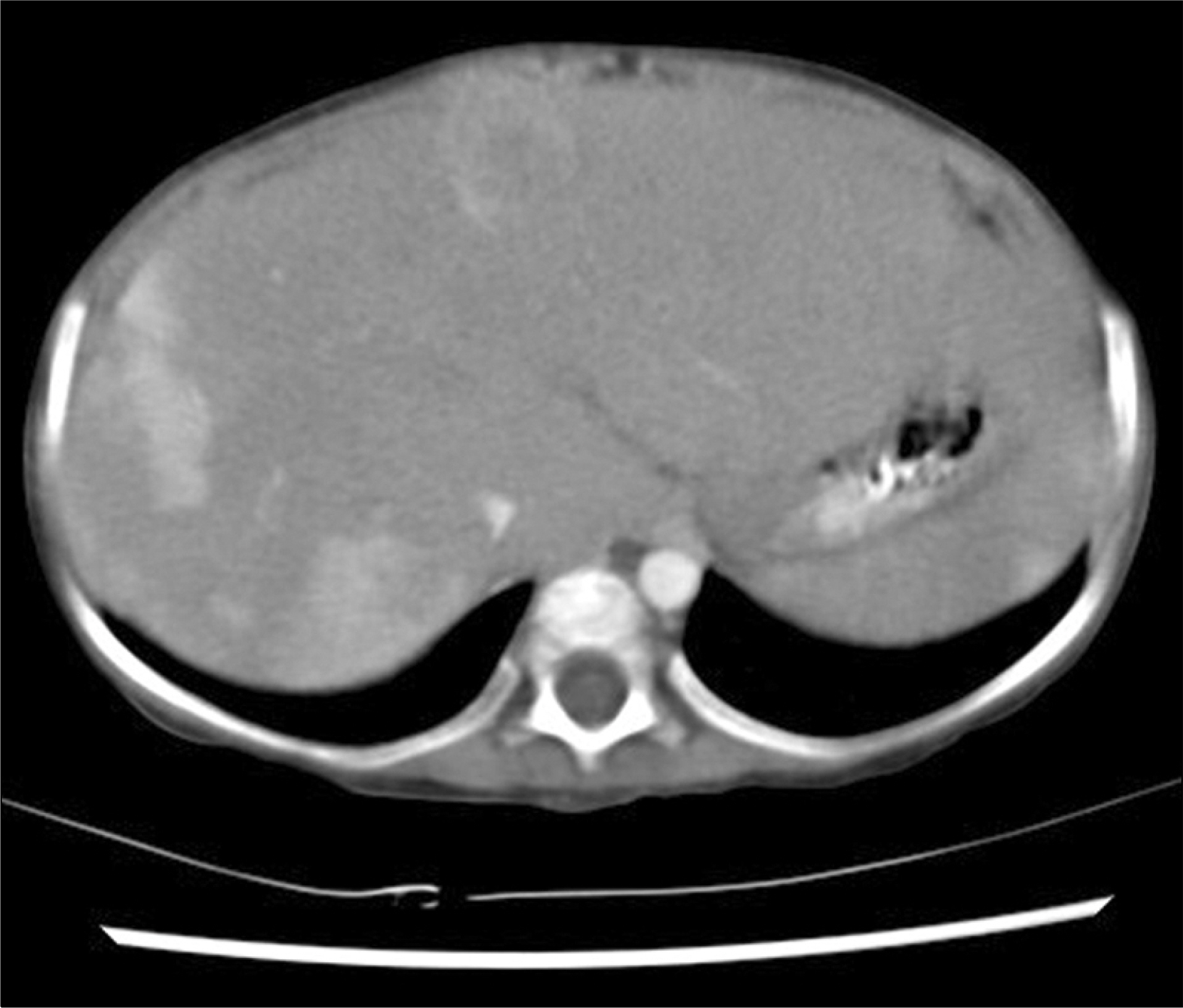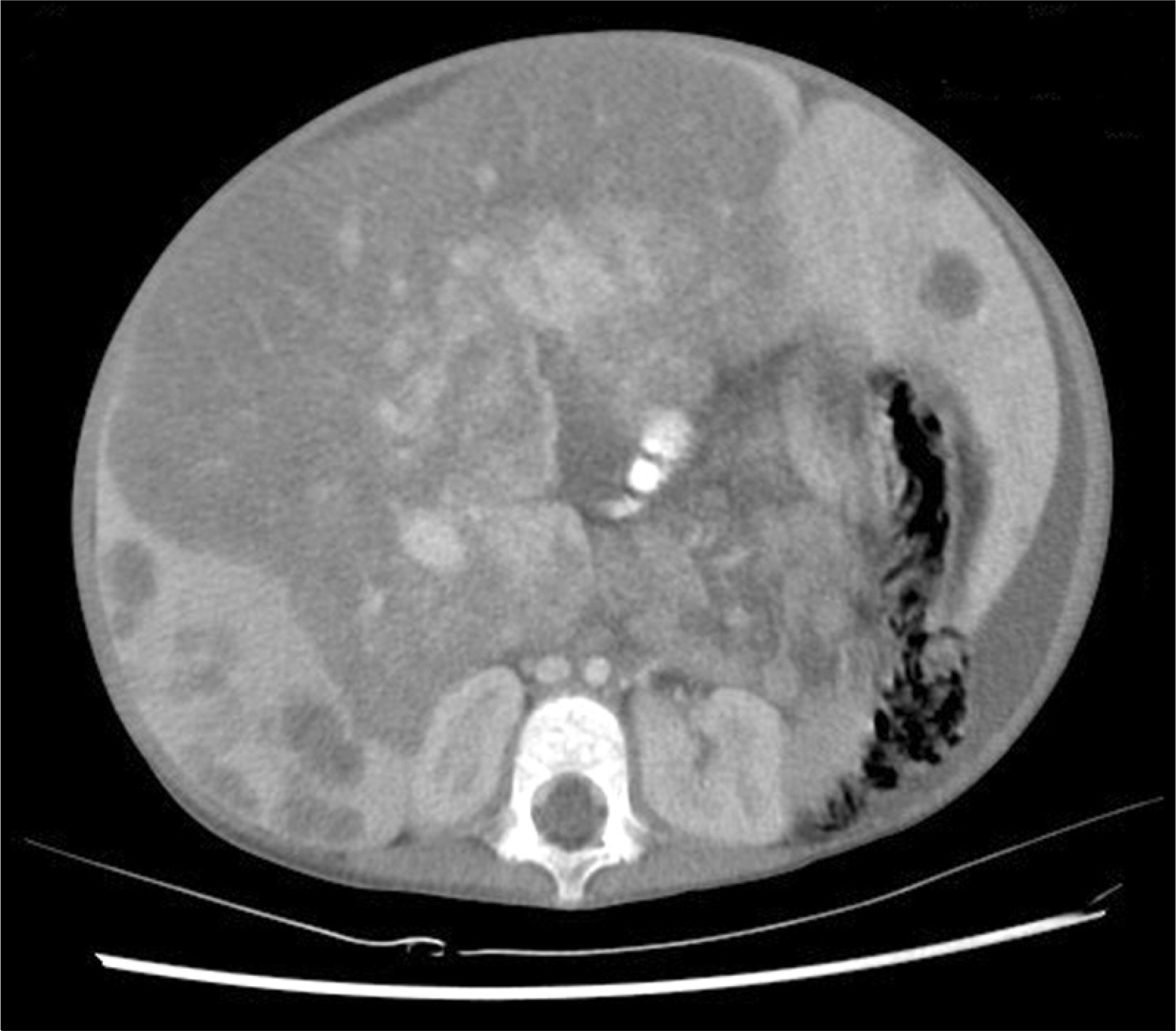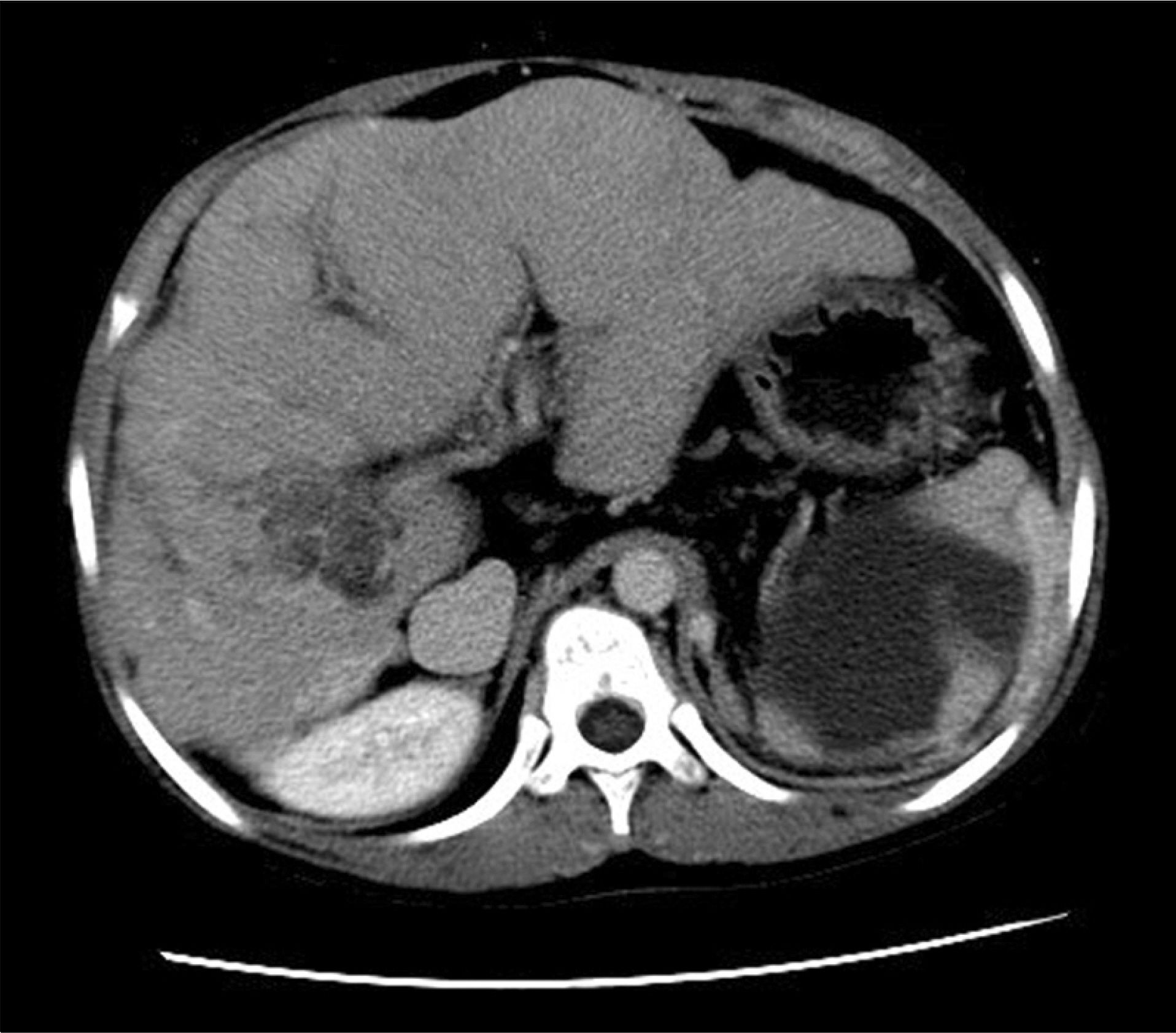J Korean Soc Transplant.
2010 Dec;24(4):306-310.
Liver Transplantation for Primary Hepatic Tumors in Children
- Affiliations
-
- 1Department of Surgery, Samsung Medical Center, Sungkyunkwan University School of Medicine, Seoul, Korea. sukkoo.lee@samsung.com
Abstract
- BACKGROUND
Primary liver tumors account for less than 2% of pediatric malignancies, and the best treatment is complete surgical excision. The aim of this study was to review the results of liver transplantation (LT) for primary hepatomas in children.
METHODS
The medical records of patients who underwent LT for unresectable primary hepatoma between May 1996 and December 2009 were reviewed retrospectively.
RESULTS
Seven of 130 patients (5.3%, M:F=4:3) underwent LT for unresectable hepatoma. The median age at transplantation was 9 years (range, 6 months-14 years). Two patients were transplanted for hepatitis B virus-associated hepatocellular carcinoma (HCC), 2 for hepatoblastoma, 1 for hemangioendothelioma, 1 for angiosarcoma, and 1 for intrahepatic cholangiocarcinoma after a Kasai operation for biliary atresia. There was no post-LT treatment except in patients with HCC who were taking immunoglobulin prophylaxis against hepatitis B. Four patients (2 HCC, 1 hepatoblastoma, 1 hemangioendothelioma) are now alive and well after 7.8, 7.2, 7.7, 6.3 years of follow-up, respectively. Three patients died after transplantation; 1 for the recurrent cholangiocarcinoma in the transplanted liver 1 year after the transplantation and 1 who underwent LT for the recurrent hepatoblastoma for the primary non-function 10 days after the transplantation. One patient died of metastatic angiosarcoma (bone) 2.5 years after LT.
CONCLUSIONS
LT can be tried for unresectable primary hepatoma in children and, although limited, the outcome was successful in patients with HCC, hepatoblastoma, or hemangioendothelioma. Careful patient selection, based on the pre-transplant histological diagnosis, seems to be related to better outcome.
Keyword
MeSH Terms
Figure
Reference
-
References
1). Reynolds M. Current status of liver tumors in children. Semin Pediatr Surg. 2001; 10:140–5.
Article2). Darbari A, Sabin KM, Shapiro CN, Schwarz KB. Epidemiology of primary hepatic malignancies in U.S. children. Hepatology. 2003; 38:560–6.
Article3). Ekinci S, Karnak I, Tanyel FC, Senocak ME, Kutluk T, Büyükpamukcu M, et al. Hepatic lobectomies in children: experience of a center in the light of changing management of malignant liver tumors. Pediatr Surg Int. 2006; 22:228–32.
Article4). Hoti E, Adam R. Liver transplantation for primary and metastatic liver cancers. Transpl Int. 2008; 21:1107–17.
Article5). Kaliciń ski P, Ismail H, Broniszczak D, Teisserye J, Bacewicz L, Markiewicz-Kijewska M, et al. Nonresectable hepatic tumors in children – role of liver transplantation. Ann Transplant. 2008; 13:37–41.6). Yokoyama I, Todo S, Iwatsuki S, Starzl TE. Liver transplantation in the treatment of primary liver cancer. Hepatogastroenterology. 1990; 37:188–93.7). Guiteau JJ, Cotton RT, Karpen SJ, O'Mahony CA, Goss JA. Pediatric liver transplantation for primary malignant liver tumors with a focus on hepatic epithelioid hemangioendothelioma: The UNOS experience. Pediatr Transplant. 2010; 14:326–31.
Article8). Czauderna P, MacKinlay G, Perilongo G, Brown J, Shafford E, Aronson D, et al. Hepatocellular carcinoma in children: results of the first prospective study of the International Society of Pediatric Oncology group. J Clin Oncol. 2002; 20:2798–804.
Article9). Reyes JD, Carr B, Dvorchik I, Kocoshis S, Jaffe R, Gerber D, et al. Liver transplantation and chemotherapy for hepatoblastoma and hepatocellular cancer in childhood and adolescence. J Pediatr. 2000; 136:795–804.
Article10). Dehner LP, Ishak KG. Vascular tumors of the liver in infants and children. A study of 30 cases and review of the literature. Arch Pathol. 1971; 92:101–11.11). Ismail H, Broniszczak D, Kaliciń ski P, Markiewicz-Kijewska M, Teisseyre J, Stefanowicz M, et al. Liver transplantation in children with hepatocellular carcinoma. Do Milan criteria apply to pediatric patients? Pediatr Transplant. 2009; 13:682–92.12). Becker NS, Rodriguez JA, Barshes NR, O'Mahony CA, Goss JA, Aloia TA. Outcomes analysis for 280 patients with cholangiocarcinoma treated with liver transplantation over an 18-year period. J Gastrointest Surg. 2008; 12:117–22.
Article13). Browne M, Sher D, Grant D, Deluca E, Alonso E, Whitington PF, et al. Survival after liver transplantation for hepatoblastoma: a 2-center experience. J Pediatr Surg. 2008; 43:1973–81.
Article
- Full Text Links
- Actions
-
Cited
- CITED
-
- Close
- Share
- Similar articles
-
- Primary Hepatic Tumors in Children
- Indication of Pediatric Liver Transplantation
- Current Status of Pediatric Liver Transplantation
- Hepatic Artery Reconstruction Using the Right Gastroepiploic Artery for Hepatic Artery Inflow in a Living Donor Liver Transplantation
- A Case of Primary Renal Amyloidosis with Fulminant Hepatic Failure




